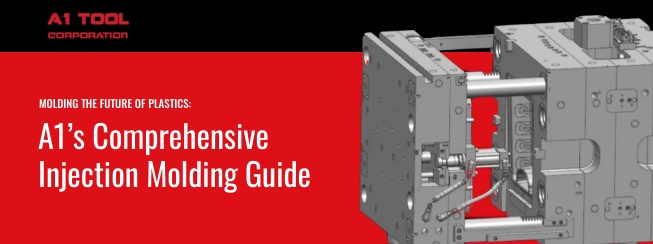What is the Injection Rate in the Plastic Injection Molding Process?
In plastic injection molding, the first step is filling the mold with the resin. It sounds simple. However, an improper fill rate can result in a wide range of part defects, both in aesthetics and strength. Two of the most important considerations for plastic injection molding fill rate are speed and gates.
Using today’s machinery, plastic injection molders can inject resin very slow, very fast, or anywhere in between. If the fill rate is too low, the material begins to cool before the cavity is filled and the pressure required to fill the cavity goes up. If it’s too slow, the injection rate inhibits cavity packing because the material cools during the filling phase and the gate will freeze very quickly after the mold is filled. This leads to higher shrinkage.
At the other extreme, if the cavity is filled too quickly, the pressure drop at the gate becomes excessive and the pressure required to fill the part goes up. Shrinkage can increase because the temperature of the plastic in the cavity is likely to be significantly higher than the temperature at the optimum fill rate.
Other issues of incorrect injection rates include high levels of molded-in stress and surface blemishes. Stress is the load (force) per unit area that tends to deform the body on which it acts. Stress is inherent to injection molding because of flow rates, pressures, and temperature applied to the material during processing. Excessive stress in a molded part can cause issues with chrome or paint adhesion to the surface. Also, in-molded stress can cause premature functional failures, especially if parts must pass physical loading, chemical testing, or thermal cycling.
Plastic Injection molding Injection Rate Issues
The optimum fill rate for plastic injection molding is found near the minimum filling pressure. The optimum fill rate for a part depends on the geometry, the size, and location of the gate; the mold temperature; and the melt temperature.
Plastic molders who are trying to save time or reduce process cycle time may fill the mold too fast. If they do, they will end up causing the plastic to trap gas in the vents, resulting in mold burns. Burn marks in injection molding are some of the most common defects. They appear as discolorations, usually brown, black or rust-colored. They can show up on injected molded parts as small spots or streaks. Burn marks on injected molded parts typically occur near the end of the flow path or where the air has become trapped.
Gate size will depend on the resin used and the size of the part being molded. The larger the gate, the easier and better it is to make high-quality parts. Small gates provide a better appearance but require longer mold time or higher pressure. On the other hand, large gates allow for better resin flow and shortened mold time. If gate size is not sufficient, it can create defects in the molds. When plastic is injected directly into a cavity with a heat-controlled nozzle, the molded part is less likely to have dimensional or surface blemishes, like black streaks.
Measuring Injection Rate Accurately
Plastic flow rate is measured in seconds from the start of injection until transfer to pack and hold at 95% to 99% full mold. (Note: This fill time is not the same as the first stage timer setting.) Fill time in combination with a calculation of shot volume gives a volumetric flow rate, which is a plastic variable measurement.
Plastic flow rate determines plastic viscosity as it enters the mold cavity. As the plastic molecules flow, they untangle and become aligned. They take up less space and slide easily past one another. This reduces the viscosity of the polymer melt. Due to this unique and direct relationship of fill time to plastic viscosity, fill time must be maintained shot to shot, and run to run.
Plastic injection molding is a process that requires considerable skill. Selection of the material, design of the part, mold design, and control of temperatures and pressures during both the molding and cooling processes all affect the molded part quality. This is why selecting the right company to create your molds is critical to your success.











